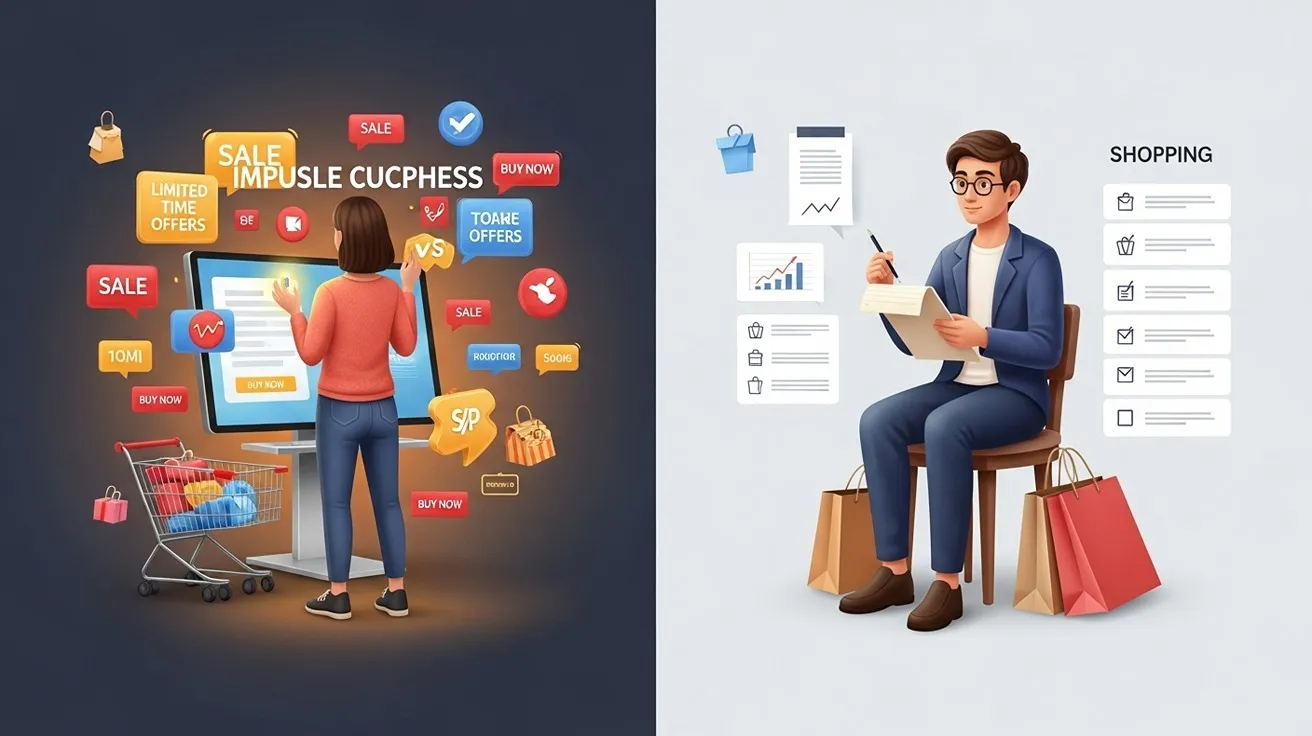
Have you ever walked into a store for one thing and left
with five? You’re not alone. Impulse buying — that spontaneous decision to grab
something on the spot — is something nearly every shopper has experienced. But
as we move deeper into the digital age, consumers are beginning to shift toward
a more thoughtful approach: intentional shopping.
The question is, which style fits today’s consumers best
— impulse or intentional? Let’s take a closer look at how these two
behaviors shape our spending habits, emotions, and even financial health in
2025.
Impulse shopping happens when we make unplanned purchases,
usually triggered by emotions, attractive deals, or clever marketing. It’s that
irresistible moment when you see a “50% off” tag or a “limited-time offer”
banner and suddenly feel the urge to buy — even if you didn’t need it.
Marketers understand this psychology well. They use color,
urgency, and placement to catch your attention. Think of checkout counters
filled with chocolates or the “only 2 left” message on an online store. These
cues make shoppers feel like they’re missing out, leading to quick decisions.
In small doses, impulse shopping can be exciting. It gives a
sense of instant gratification — that rush of joy after clicking “buy now.”
However, too much of it often leads to buyer’s remorse and unnecessary
spending.
Intentional shopping is the opposite — it’s mindful, planned,
and purpose-driven. Instead of reacting to a discount, intentional shoppers
take time to research, compare, and understand what they’re buying.
This behavior has become more common in recent years as
consumers grow more financially aware. With inflation, subscription fatigue,
and tighter budgets, many are asking, “Do I really need this?”
Intentional shoppers value quality over quantity. They might
spend more upfront but focus on long-term satisfaction rather than short-term
excitement. This approach not only saves money but also aligns with
sustainability and conscious consumption trends.
The digital marketplace plays a huge role in both impulse
and intentional shopping. On one hand, social media encourages impulse
buying through influencer recommendations and flash sales. On the other, AI-driven
shopping tools help intentional shoppers compare prices, find reliable
reviews, and make smarter choices.
Platforms like TikTok and Instagram push trending products
that tempt impulse buyers, while Chrome extensions and AI assistants offer
price-tracking tools for those who shop with strategy. It’s a perfect balance —
technology can either trigger your impulses or empower your intentions,
depending on how you use it.
Shopping isn’t just about money — it’s emotional. Impulse
shoppers often buy for the thrill, comfort, or distraction. Retail therapy is
real — that small sense of happiness from making a purchase can be addictive.
Intentional shoppers, on the other hand, find satisfaction
in control. They feel accomplished when sticking to a budget or waiting for the
perfect deal. The emotional reward comes not from the act of buying, but from
making the right decision.
Interestingly, many modern consumers blend both styles. They
might plan their big purchases but allow small “treat yourself” moments here
and there. This hybrid approach helps maintain balance — financial discipline
without denying simple joys.
The pandemic, economic uncertainty, and rising living costs
have changed how people view money. Today’s shoppers are more thoughtful and
data-driven. They read reviews, track prices, and look for trustworthy brands
before committing to a purchase.
Moreover, eco-consciousness is influencing buying
behavior. Consumers now prefer sustainable, durable, and ethical products over
cheap, short-lived ones. Intentional shopping aligns with this mindset — less
waste, better quality, and more purpose.
Still, retailers continue to thrive on impulse tactics —
limited-time offers, countdown timers, and influencer endorsements. The battle
between emotion and logic continues, but intentional shopping is clearly
gaining ground in 2025.
There’s no one-size-fits-all answer. Sometimes, that
spontaneous coffee mug or flash sale deal really does bring happiness — and
that’s okay. But building a habit of intentional spending ensures your finances
and values align.
A good strategy is the “pause rule” — if you find
something you want, wait 24 hours. If you still want it after that, it’s
probably worth buying. If not, you’ve avoided an impulse purchase.
Whether you’re an impulse buyer or an intentional planner,
what matters most is awareness. Knowing why you buy helps you make smarter
decisions and enjoy shopping without guilt or regret.
To explore more guides and insights on smart shopping
habits, discounts, and consumer trends, visit TrandyReviews.com
for the latest tips and strategies to make your spending more rewarding.